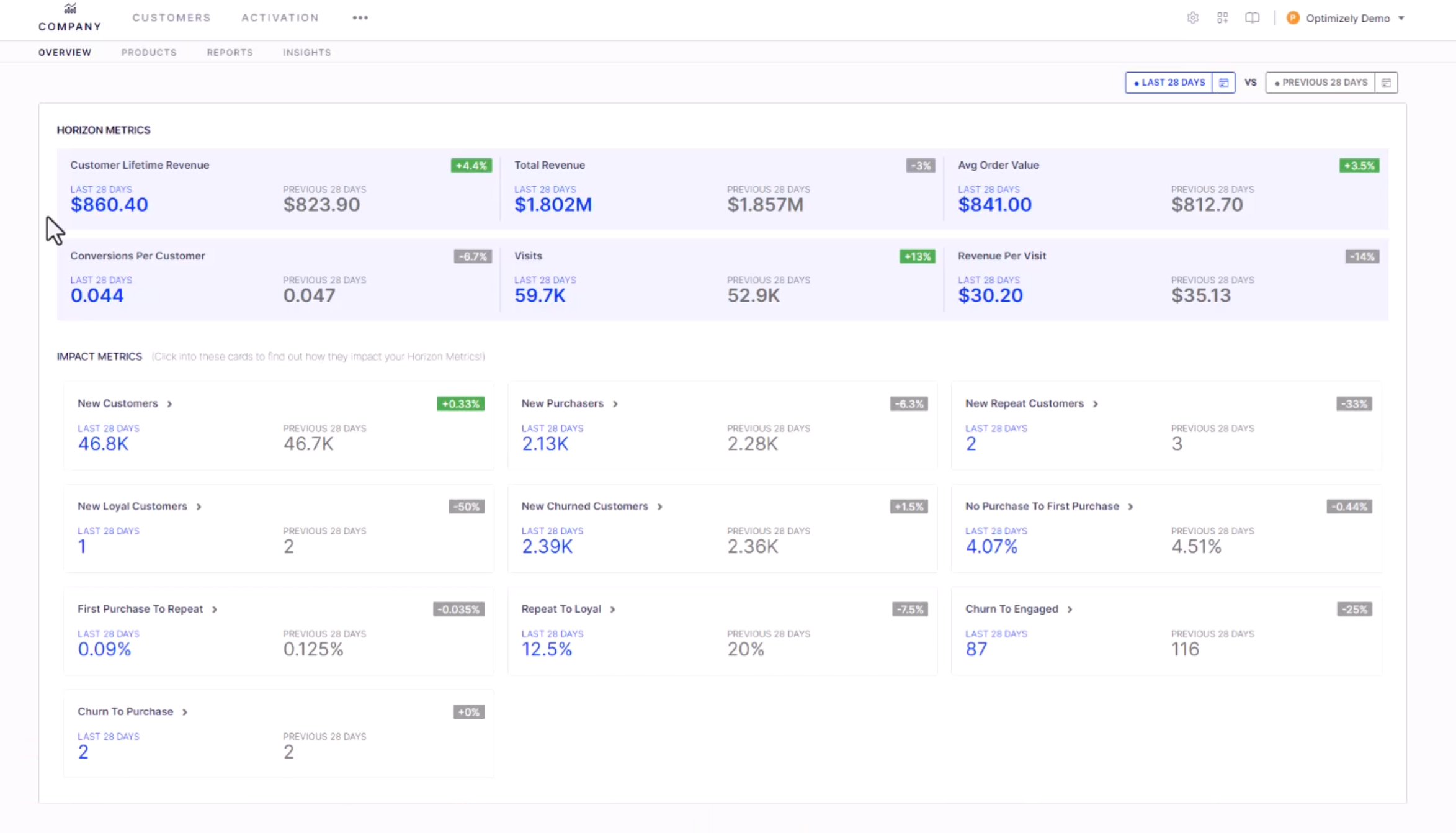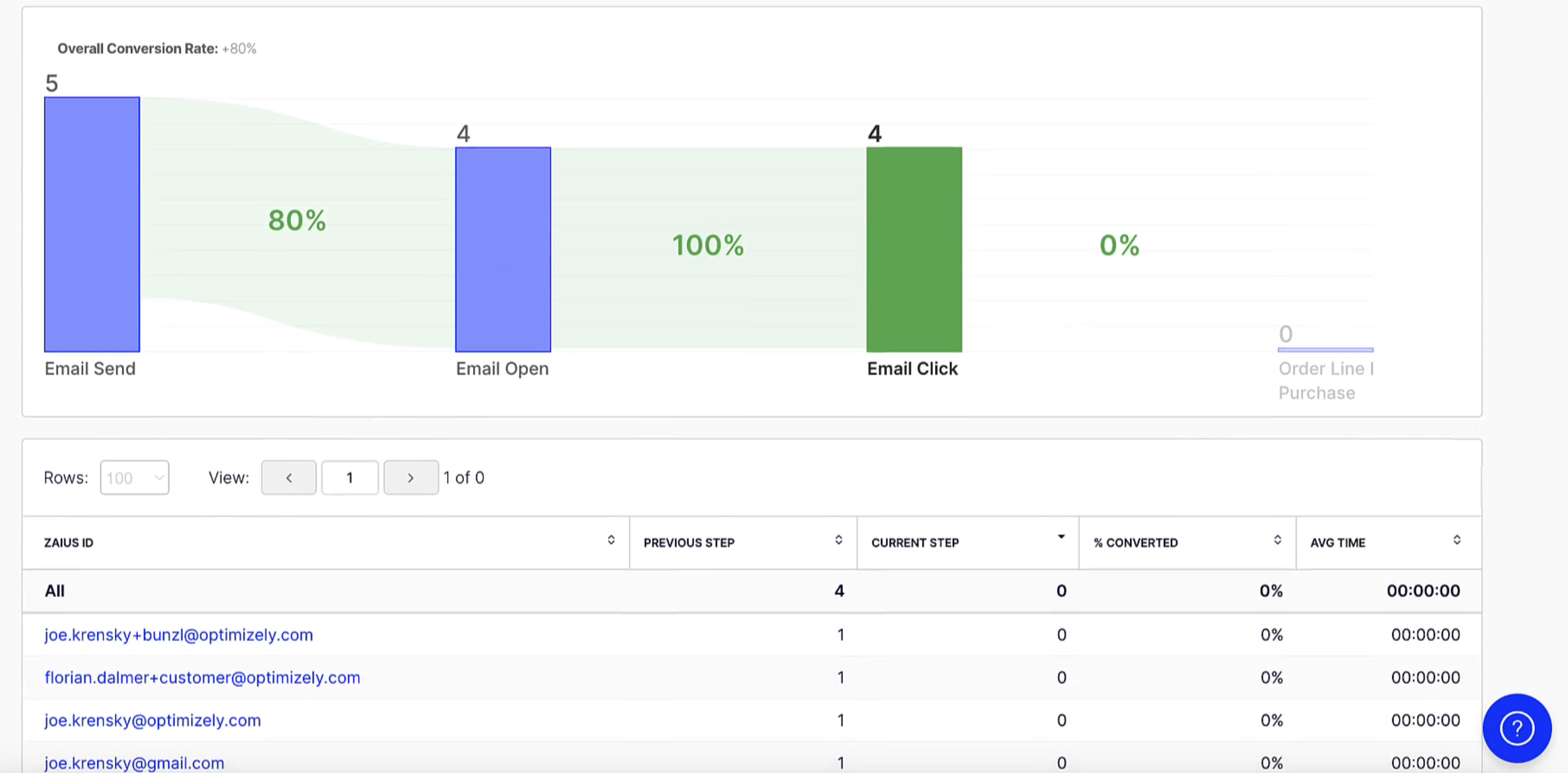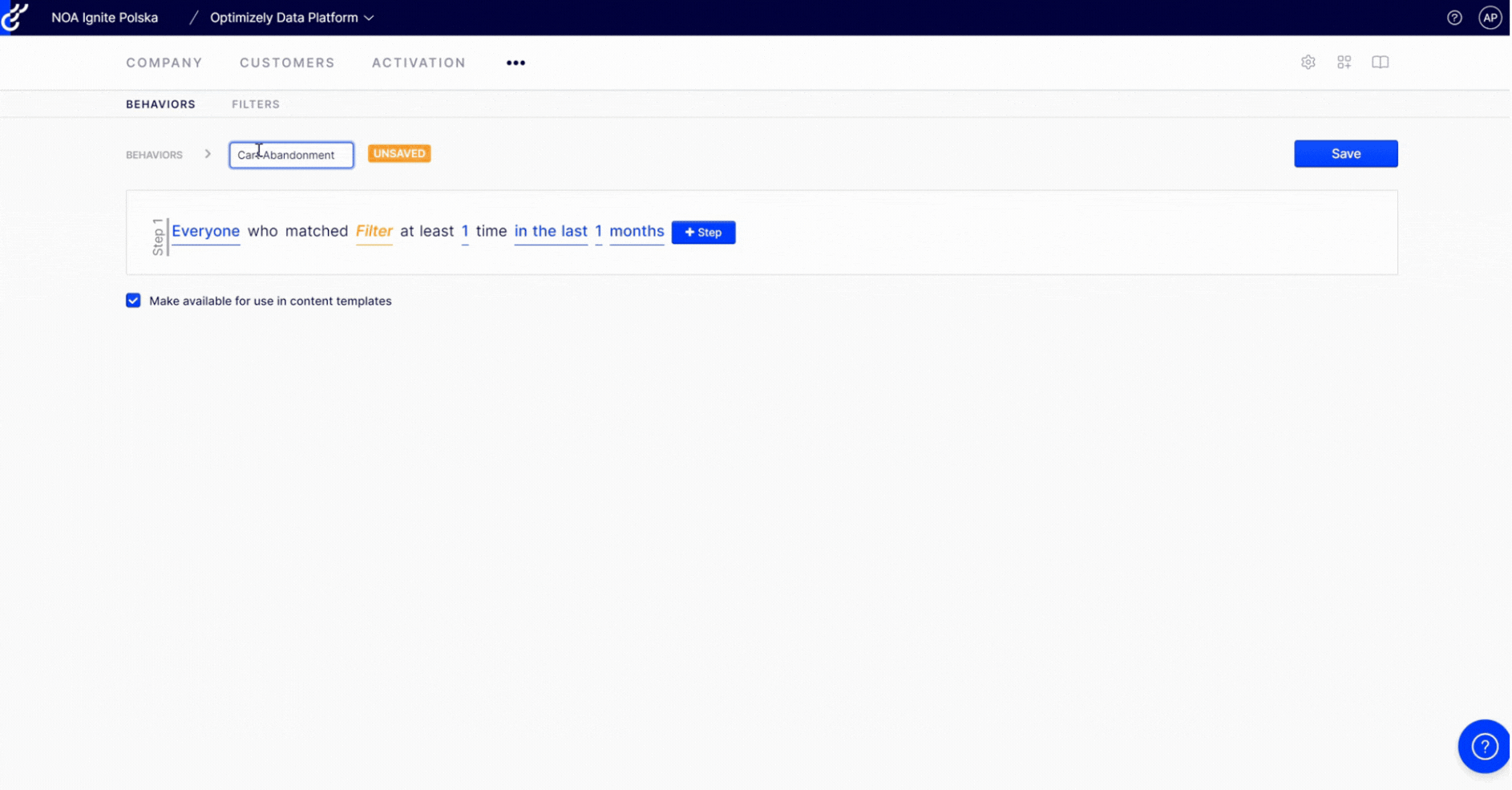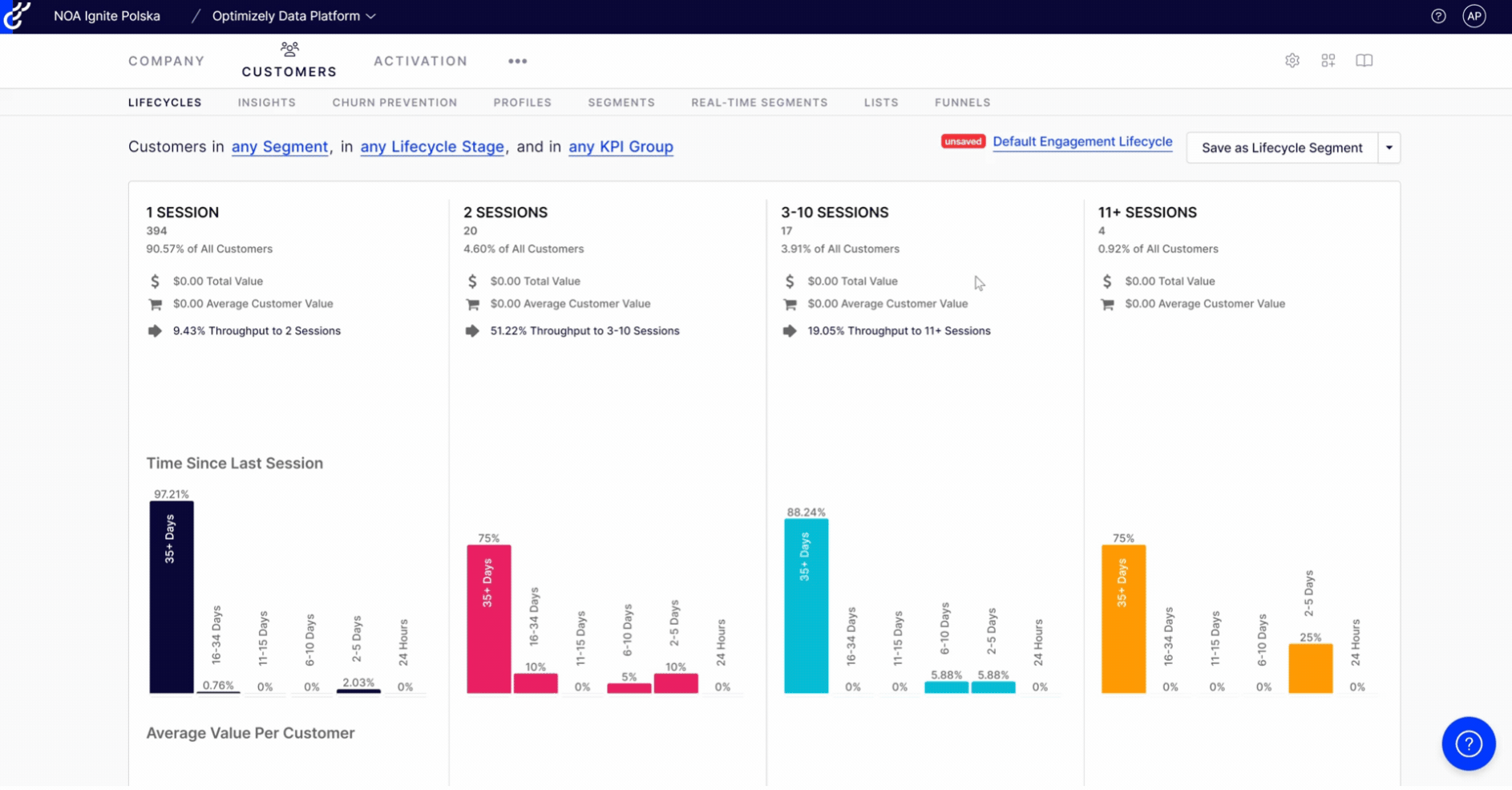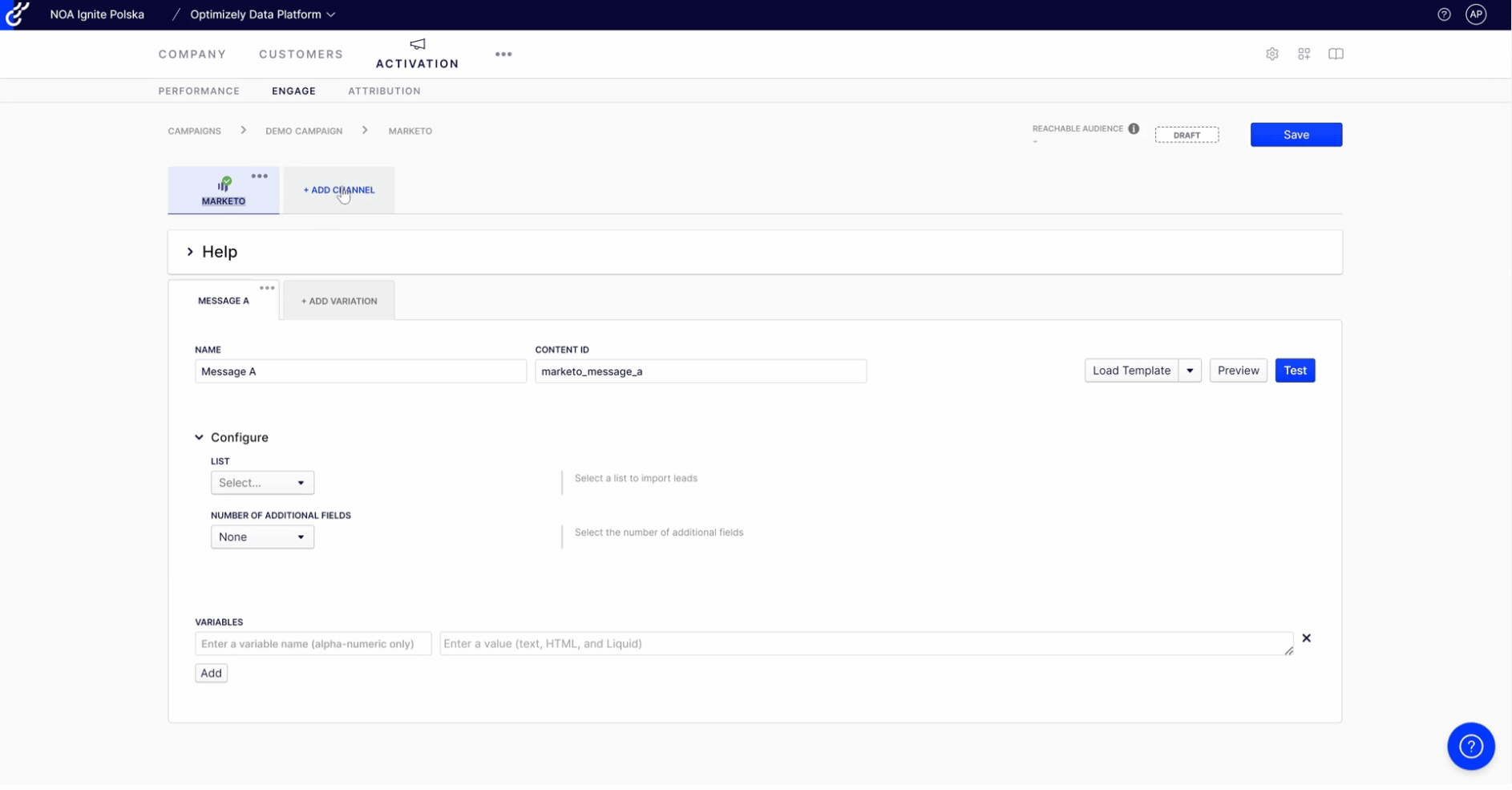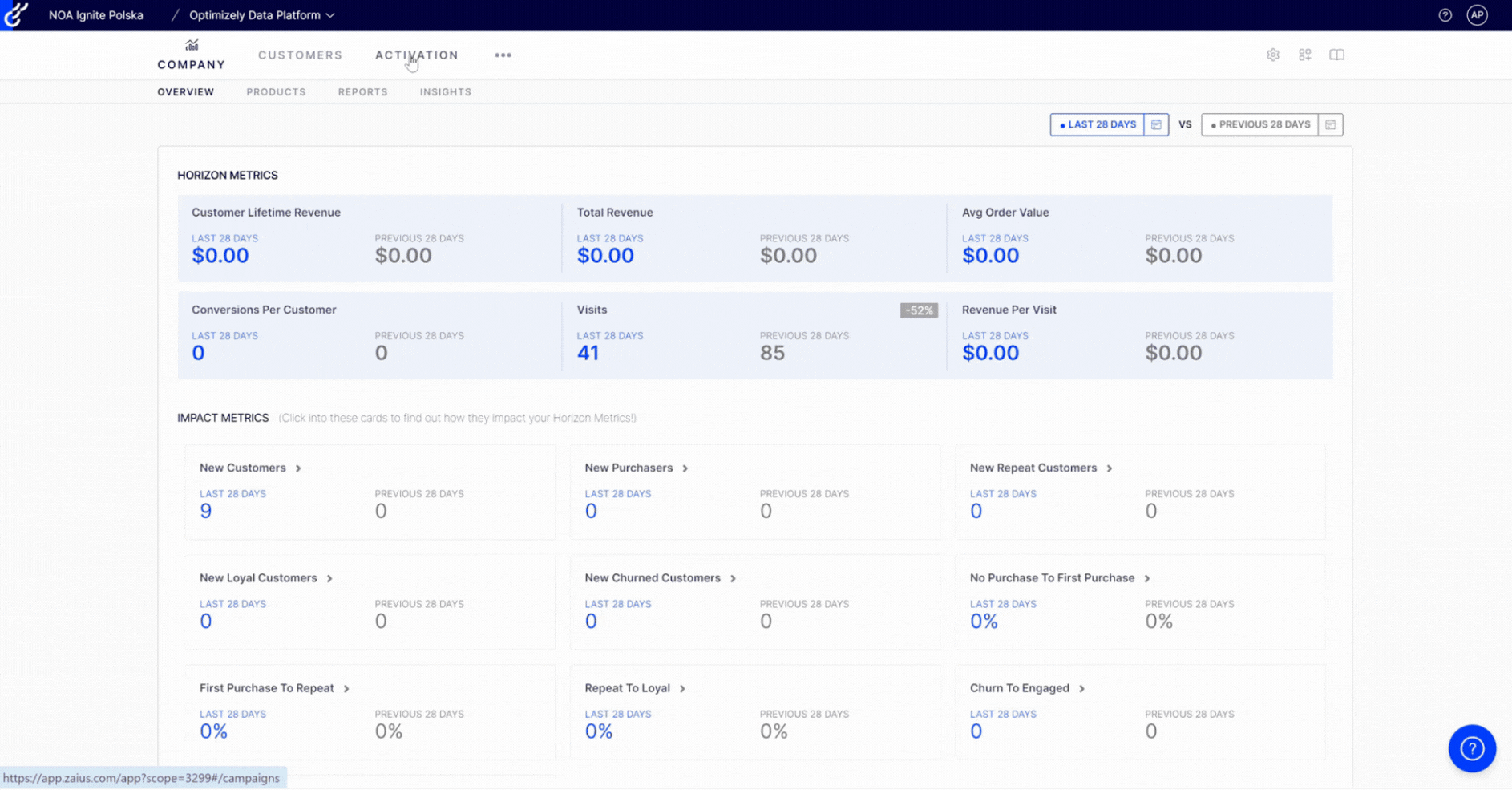Everything you need to know about Optimizely Data Platform
July 26, 2024 / 10 min read

This guide covers how Optimizely Data Platform (ODP) can improve your business with real-time customer insights, personalised campaigns, and simple data integration and will give you everything you need to get started with ODP.
ODP Introduction
Optimizely Data Platform (ODP) organises customer data to provide a real-time understanding of customer behaviours. It enables your business to scale highly personalised, multichannel campaigns using AI-powered predictive analysis and share insights across other Optimizely products.
The four core data processes of ODP:
- Data Collection: ODP collects data from various sources and systems.
- Data Governance: Ensures incoming data reliability by adhering to rules like GDPR and CCPA, and controls who can access and transfer data based on privacy rules.
- Data Synthesis: Segments data into groups for easy access and assessment, updating customer profiles in real-time and integrating anonymous data with existing profiles to make them more complete.
- Data Activation: Simplifies the creation and management of omnichannel campaigns, ensuring relevance at every customer touchpoint.
ODP allows your organisation to integrate data from multiple sources and create better customer profiles by using insights from across your entire tech stack. For a full list of integrations, visit Optimizely Integrations.
ODP aggregates and merges customer data based on identifiers (email, phone number, e-commerce ID, VUID, cookie ID, etc.) from different sources, a process known as identity resolution.
Integration with your e-commerce platform
ODP is especially valuable when integrated with your sales platform. It allows you to track the entire customer purchasing journey and their engagement throughout it. By using funnels, you can identify the exact stages where customers abandon their purchases and implement targeted campaigns to encourage completion.
For example, integrating ODP with an e-commerce platform like Optimizely Commerce provides you with a complete overview of purchasing trends and client engagement during the purchasing process. This data offers a wealth of information related to your customers’ activities. ODP collects this data, manages it, and analyzes it, letting you optimise your e-commerce operations, improve your customer experiences, increase conversions, and ultimately gain more profits.
ODP can also provide you with key performance indicators such as total revenue, average order value, and conversion numbers that can be reviewed and analysed. ODP gives you two metrics to help identify opportunities for improvement and encourage business growth:
- Horizon metrics: General statistics over a specified time range based on customer attributes and website performance.
- Impact metrics: Represent the life cycle movements of customers and their engagement levels. By clicking on specific tiles within the Impact Metrics tab, users can analyse all Horizon Metrics calculated for that case, campaign attribution section, and AI-detected opportunities for improvement.
Marketers can also use the Product Directory (Company>Products) to gain insights into ODP’s view of their product feed. By clicking the "View More" button, you can review ODP-generated insights and product recommendations.
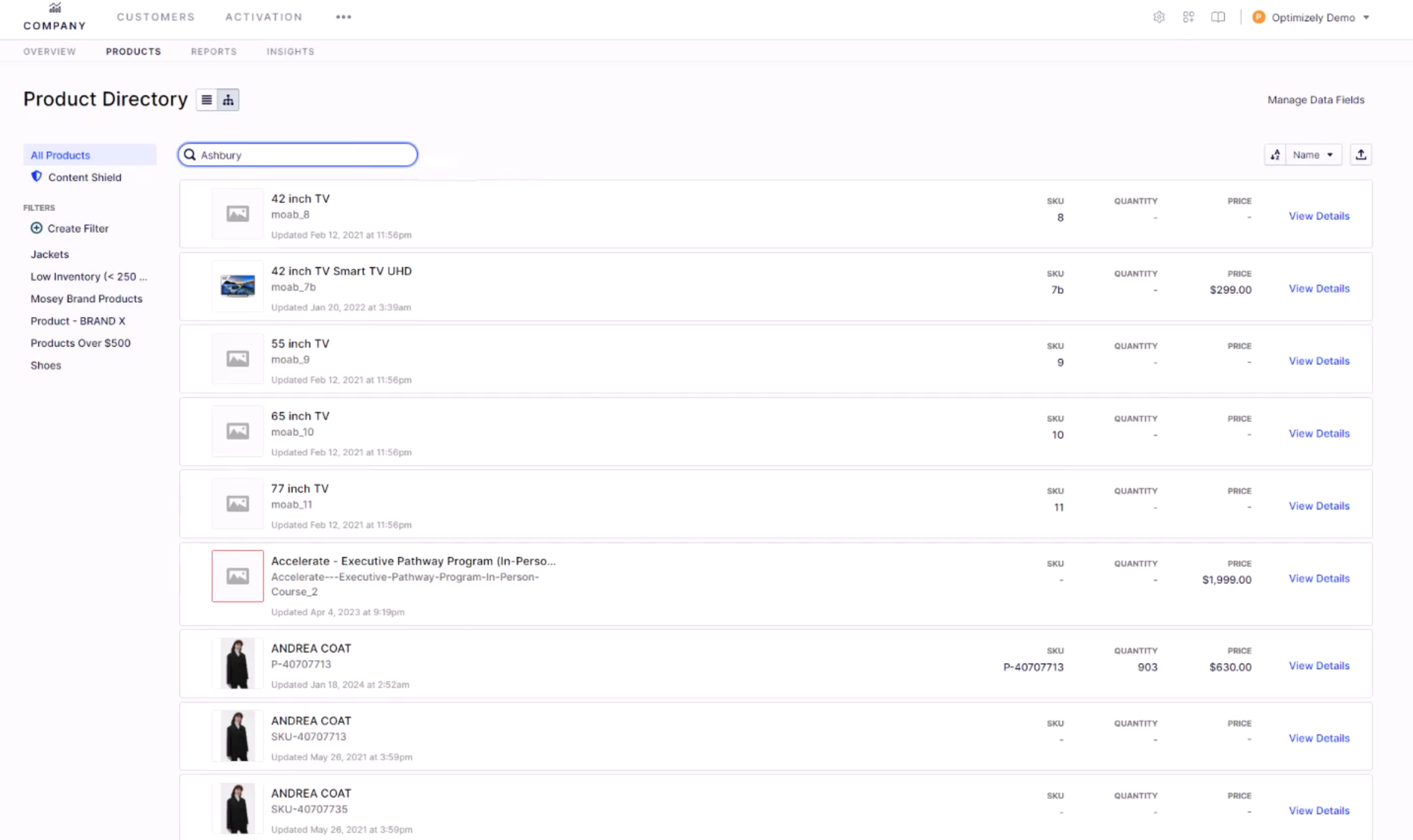
Real-time segmentation
Creating real-time segments is another useful feature of ODP. It allows you to continuously segment customers and personalise their experiences. Unlike traditional segmentation, which usually updates less frequently, this feature uses customer event data from the past 28 days to continuously update your segments.
These real-time segments load asynchronously, meaning they do not slow down page load times for visitors browsing your site and have a data latency of less than 90 seconds!
Real-time segments use cases:
- Web campaigns: Target customers with personalised web campaigns, which make the content shown to them relevant to their most recent interactions.
- Optimizely web and feature experimentation: Use real-time segments as audiences in your experimentation efforts to test and optimise different features and content variations.
- Visitor Groups in Optimizely CMS: Implement real-time segments with the Visitor Groups feature in Optimizely Content Management System (CMS) versions 11 and 12, again providing more personalised web experiences based on up-to-date customer data.
- Email and marketing campaigns: Use real-time segments as audiences in your newsletters, transactional emails, and marketing automation campaigns through the Optimizely Campaign tool.
Funnels
Funnels are another important feature of ODP, giving you insights into customer behaviour by mapping out a series of steps you want customers to take in a specific order. Analysing the output data from the funnel, you can see how many customers complete each step and where they drop off along the timeline.
Understanding where and why customers abandon the engagement process is crucial, especially if your conversion rates are not meeting expectations. Funnels help identify these drop-off points, allowing you to implement targeted strategies to address and solve the issues.
Funnels use cases:
- Analyse customer journeys: Understand how customers move through various stages of your purchasing process and identify bottlenecks.
- Efficient marketing efforts: Implement targeted campaigns to address specific drop-off points and improve overall conversion rates.
- Improve user experience: Make data-backed decisions to improve the customer journey and personalise the user experience.
Behaviours
Another feature of ODP is behaviours, which are a series of customer actions that give you data on how customers interact with your brand. ODP can interpret these behaviours through a set of ordered filters giving you deep insight into your customers’ preferences.
Behaviours use cases:
Behaviours are great for creating segments and populating dynamic grids in campaigns. By analysing customer actions, you can come up with targeted strategies to re-engage customers and get them back in the purchasing process.
A good example of using behaviours is in a cart abandonment scenario. When customers visit your product pages but leave without adding items to their carts, you can set up a behaviour-based campaign in ODP to try to convert them. The campaign could send personalised emails to different customer segments, reminding them of the products they viewed and encouraging them to complete their purchase.
Dynamic Grids
Dynamic grids in ODP give you an easy-to-use way of creating and customising data grids for effective display and management of your data. It provides a flexible and interactive way to organise, filter, and control the data shown to customers in campaigns.
Dynamic grids use cases:
Once you have created product collections (Company>Insights) you can quickly present them to customers in any campaign using a dynamic grid. This means that you’ll show your customers the most relevant and attractive products for them, which in turn will improve the chances of conversion.
For example, using product-based filters within a Dynamic Grid configuration, you can perfect and manage the information shown to customers. This includes excluding alternative product references when focusing on a particular brand or category.
You can also use different data sources to improve campaign content, for example:
- Behaviours as a Source: Propose products that customers have previously abandoned in their carts.
- Recommendations as a Source: Include personalised recommended products in your campaign content.
AI Analysis
Insights about products
ODP has the ability to use AI analysis to provide insights into product performance, helping you make smarter marketing decisions.
One ability of this feature is the Product Opportunities Report, accessible through the Company > Insights section. This report reveals the relationship between product views and sales for items viewed and sold at least twice in the last 30 days.
The Product Opportunities Report includes two main insights for you to track product performance:
- Visibility Score: This metric reflects the number of page views a product detail page receives.
- Sales Score: This metric indicates the number of units purchased for a particular product.
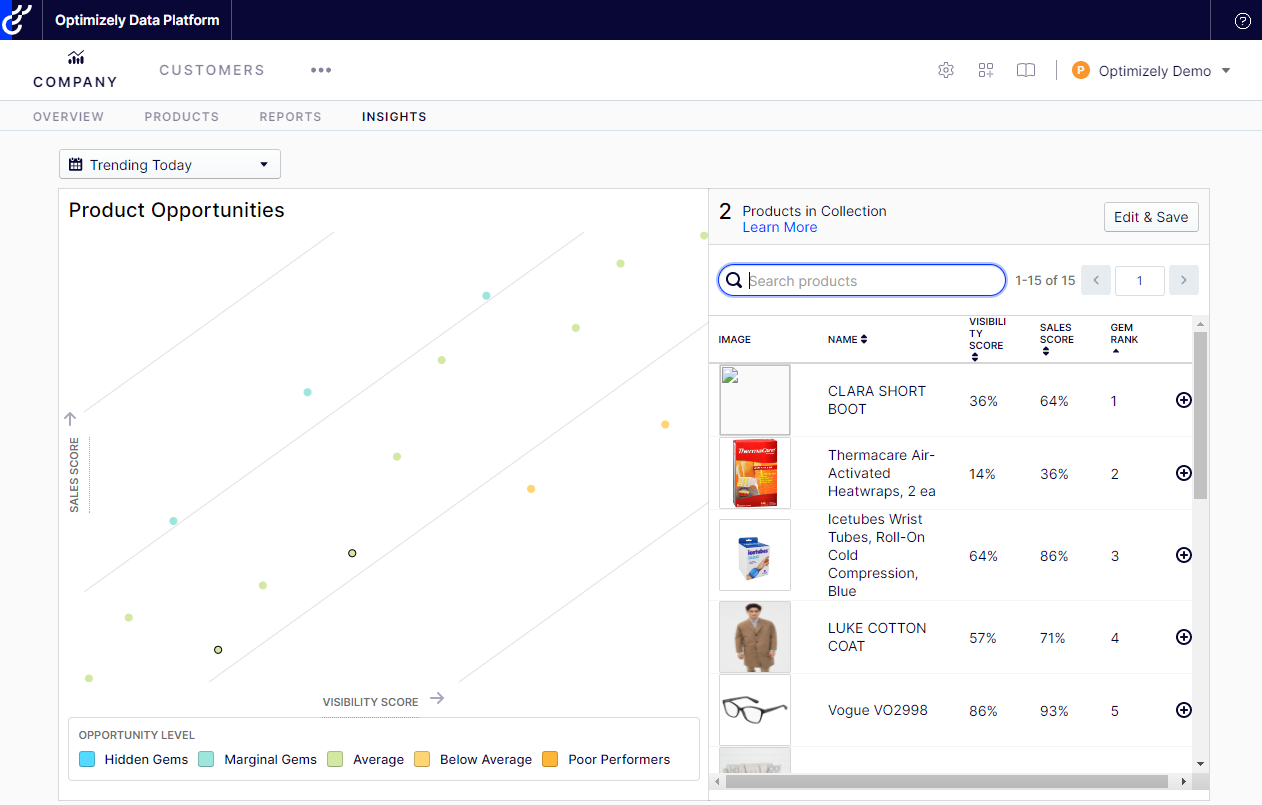
In addition to these scores, each product is assigned a Gem Rank, calculated as the difference between the sales score and the visibility score. Products with a Gem Rank close to 1 are considered hidden gems—highly attractive items that drive significant sales despite low visibility. Conversely, poor performers are products that attract considerable traffic but fail to convert into sales.
Use cases:
- Identify seasonal opportunities: Use the timeframe selector to analyse how products performed during specific periods, such as campaigns or holiday seasons.
- Create product collections: Based on the insights gathered, the AI can identify promising products and create personalised collections to propose to customers in your campaign content.
AI-predicted time until next order report
ODP has another AI feature which predicts the number of days and likelihood of an order for each customer. This allows you to spend your marketing resources more effectively and accelerate purchase timelines.
The ‘predicted time until next order report’ is located in the Customers>Insights section and will calculate these attributes on every single customer. The insights are not only useful as a reporting tool but can also be used within the segment builder feature as customer attributes for even more precise targeting and segmentation.
Use cases:
- Speed up sales: By identifying customers who are likely to purchase soon, you can target them with specific campaigns designed to encourage quicker conversions.
- Identifying ready-to-buy customers: You can use the report to find newer customers who resemble your existing customer segments and send them the best-performing content.
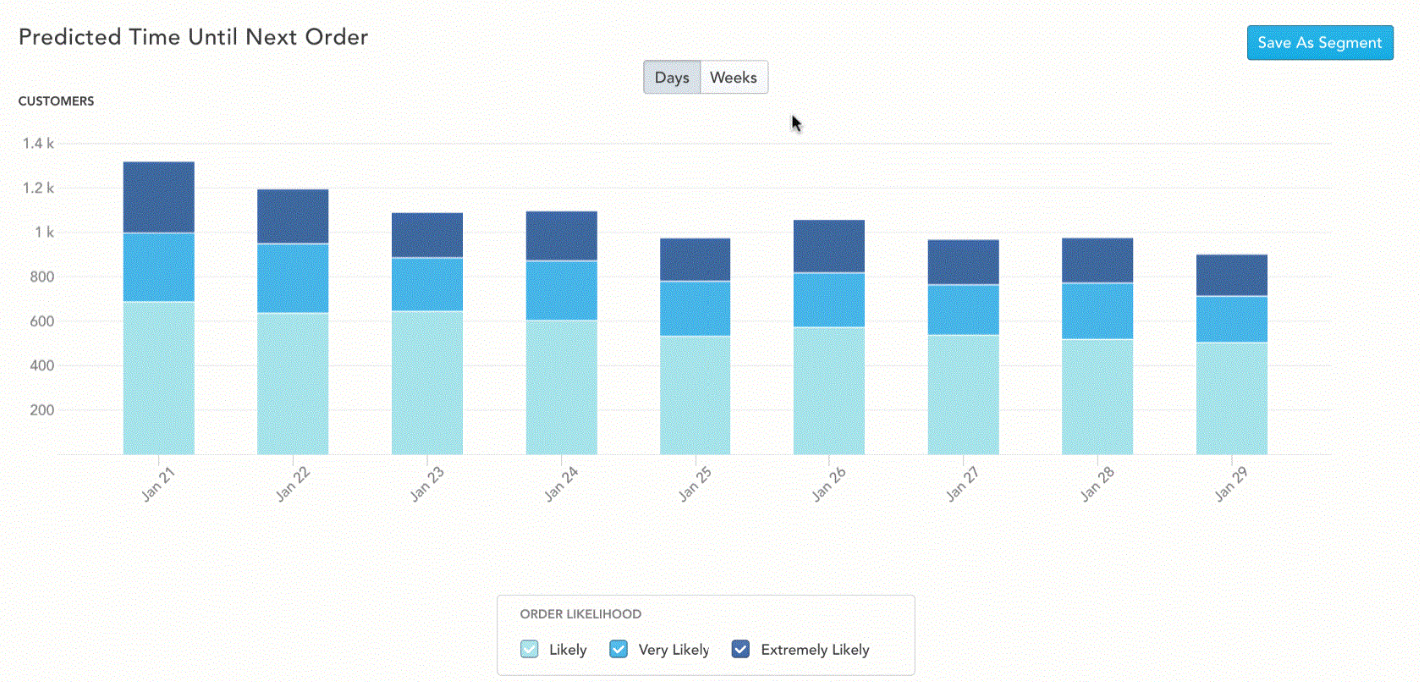
AI customer lifecycles analysis
ODP’s AI capabilities also give you access to customer lifecycle analysis. It gives you insights into your customer journey by segmenting customers based on their purchase considerations and engagement levels.
Use cases:
- Targeted campaigns: Use lifecycle analysis to create specific customer segments for targeted marketing campaigns.
- Additional reporting: Create additional, detailed reports based on lifecycle segments to better understand your customer behaviours.
Churn prevention
AI-assisted churn prevention in ODP helps your business identify and re-engage customers that you are at risk of losing. This strategy uses customer behaviour data to predict and prevent churn, which in turn leads to steadier customer base growth.
Most brands face this challenge – a segment of their customer base that has disengaged and may never return. To counteract this problem, targeted campaigns aimed at these disengaged customers can be highly effective.
Churn prevention strategies:
- Identify at-risk customers: Through analysing past behaviours, ODP identifies the customers you are at risk of losing.
- Time messages perfectly: This strategy adjusts the timing of churn prevention messaging so that they are delivered when they can be most effective.
Use cases:
- Winback campaign recipe: A winback campaign configuration which includes a specifically targeted segment of at-risk customers with an email campaign that delivers three touchpoints over two weeks.
- Winback in Segment Builder: You can use winback insights from your segment builder to create your own campaigns, analyses, and segment sync.
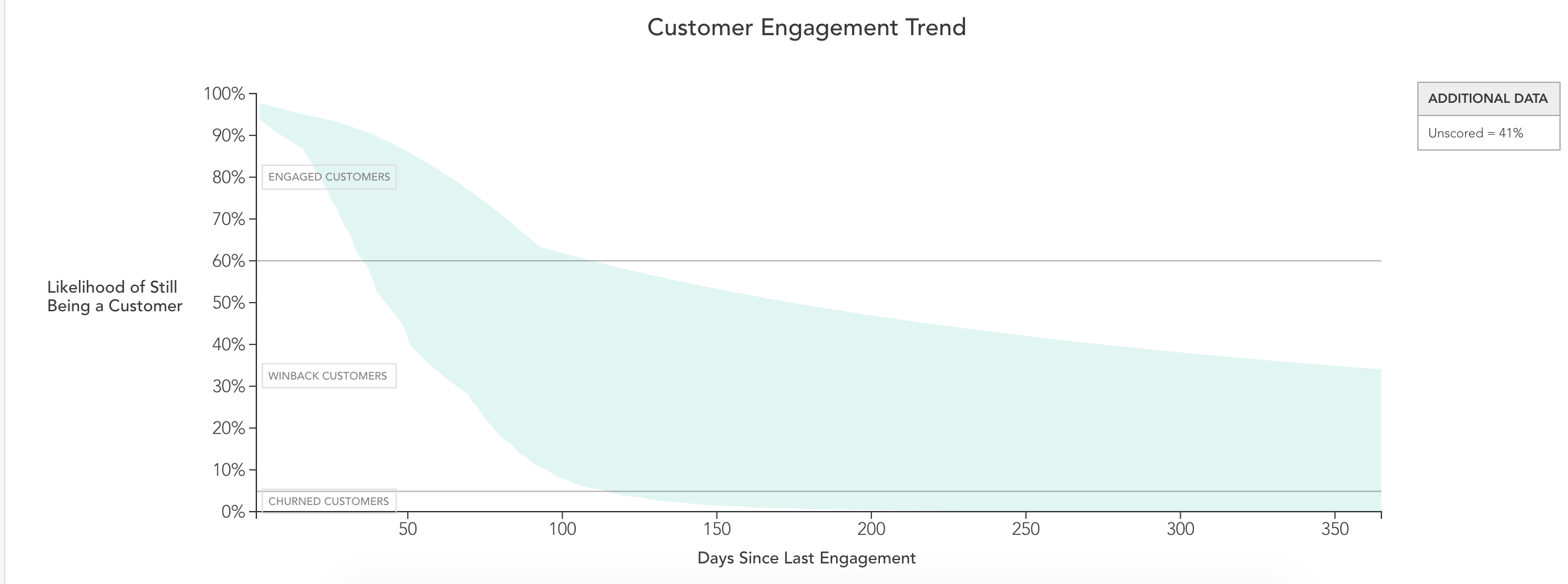
Activation
The Activation > Engage page in ODP is for creating, running, and managing campaigns across multiple channels. As part of the marketing automation suite, it enables your business to easily create personalised content, improve user engagement, and increase conversion rates in marketing campaigns.
ODP supports targeting customers who are reachable and opted-in via various channels such as email, SMS, web, and app push notifications. Campaign content can be delivered as a web modal or embedded content. Depending on the campaign type, it might be necessary to integrate with third-party platforms, such as email service providers for email campaigns.
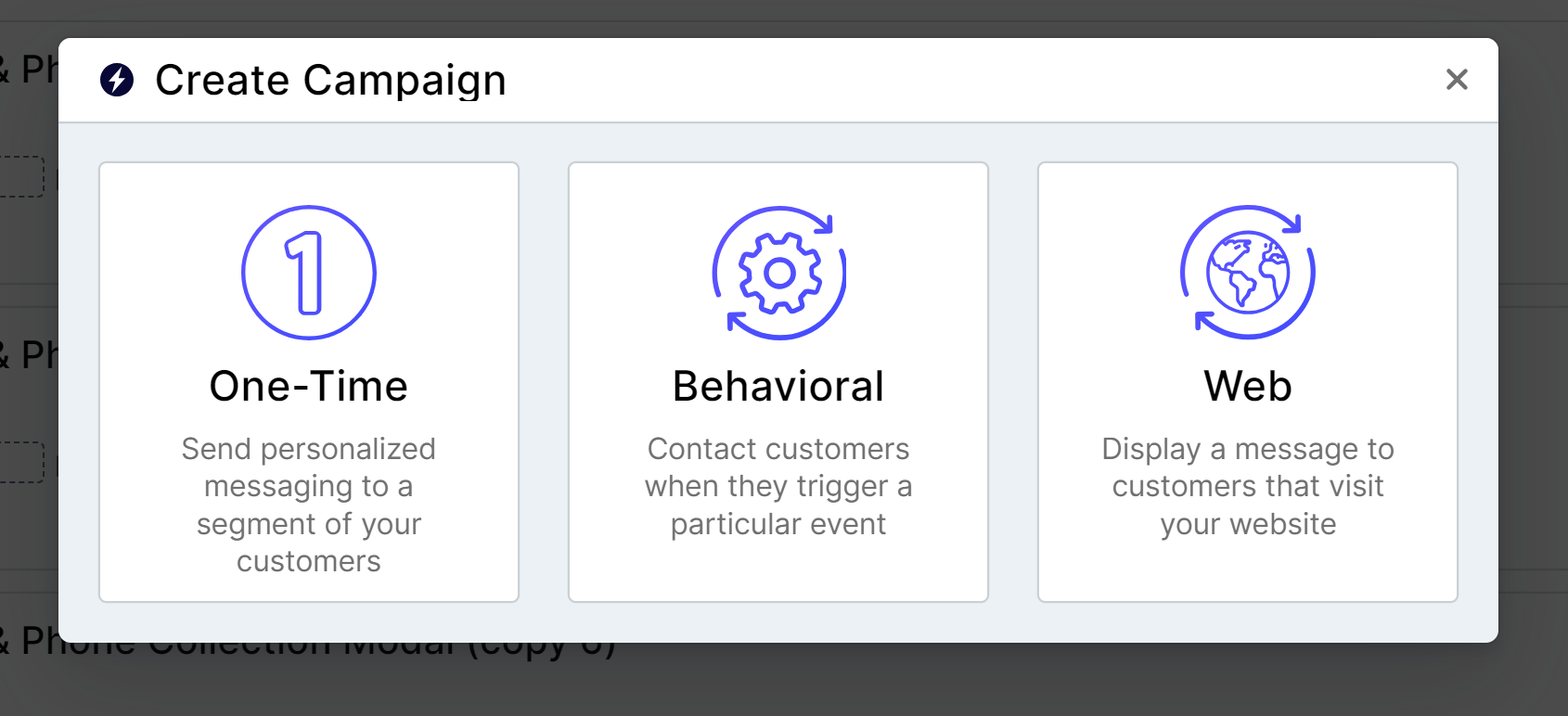
Campaign structure
Enrollment – Determine who will be engaged in your campaign. For One-time, Behavioral, and Web campaigns, choose an existing customer segment or create a new one. In Behavioral campaigns, you can select event-based enrollment to trigger the campaign based on specific customer actions. The enrollment rules section allows further audience narrowing.
Touchpoints - Select and configure the channel for your touchpoints. Schedule the start and end times for the campaign (or the frequency for recurring campaigns). Using multiple touchpoints enables engagement through various channels, increasing interaction and retention chances. The available channels depend on your installed integrations.
Some channels come with user-friendly template editors, especially for email and web campaigns. These editors allow you to design templates for both desktop and mobile versions, preview them, and send test SMS directly to your phone. ODP templates save the structure and design of your content for future use, and web campaigns include built-in recipes for easily capturing customer data like email addresses and phone numbers.

A/B testing
You can increase your engagement by experimenting with multiple content variations (up to 5) using A/B testing. Optimizely recommends using two or three variations for the most effective results.
A/B testing allows you to make data-backed decisions by comparing variations and understanding how changes impact user behaviour and engagement. You can test different offer types, content formatting, and even sending emails from different addresses.
Omnichannel campaigns
Omnichannel campaigns are important for running cohesive marketing efforts across multiple channels while delivering consistent messaging and experiences to customers at each touchpoint. They help increase conversions by reaching customers through their preferred channels with targeted messages and offers, ensuring a standardised interaction with your brand, regardless of the device or channel used.
Use cases:
- Unified customer experience: Your customers can browse products in-store, compare prices on their phones, and make purchases on their tablets without re-identifying themselves when switching channels.
- Channel-Specific Messaging: If a customer lacks an email address but has a valid web push token, they will receive the web push message and advance to the next campaign stage.
Campaign attribution tool
Use the campaign attribution tool (Activation>Attribution) to evaluate customer touchpoints and determine which channels and messages influenced their decision to convert or take a desired next step. This will help you in making more informed decisions for future campaigns.
Use cases: Imagine an e-commerce company running multiple marketing campaigns across channels like Google Ads, Facebook Ads, email newsletters, and influencer partnerships. Using ODP's attribution tool, this company can analyse the effectiveness of these campaigns and optimise its marketing strategy. By employing attribution models such as first-touch, last-touch, or multi-touch, the company can identify which channels drive the most conversions. For example, they might find that Facebook Ads are effective for initial awareness, while email newsletters drive conversions later in the funnel.
Performance metrics
ODP provides several metrics related to the performance of your campaigns or activations (Activation>Performance):
- Metrics overview: An aggregated view of key performance metrics such as impressions, clicks, conversions, conversion rates, revenue generated, average order value, and return on investment (ROI).
- Time analysis: Graphs or charts showing performance metrics over time, helping you track trends, identify seasonal variations, and understand the impact of campaign changes.
- Campaign performance comparison: A comparison of different campaigns or activations based on performance metrics, allowing you to see which campaigns drive the most significant results.
Report and Optimizely reporting tool
The Reports tab in the ODP gives you a comprehensive view of your account's standard reports as well as any custom reports you have created. Custom reports are a great feature, allowing you to analyse data from various sources, such as customer profiles, to gain deeper insights and make informed decisions.
For even better reporting capabilities, Optimizely offers the Optimizely Reporting tool, accessible via the product switcher if you have an ODP account with an Opti ID. This tool features user-friendly dashboards that display key data quickly and easily, making it simple to interpret and act on your data.
Summary
ODP is an advanced tool designed to store unified and comprehensive customer profiles, analyse and interpret customer data, and activate this data through a wide range of targeted campaigns aimed at specific recipient groups. By employing ODP, you can increase customer engagement with your brand, leading to higher conversion rates and increased revenues.
The benefits of using a Customer Data Platform (CDP) like ODP are particularly strong for e-commerce businesses or those conducting online sales. ODP provides invaluable insights, which show how users browse and purchase products and extensive statistics that reveal how often users buy and how much they spend. Also, ODP's targeting capabilities based on various product interactions allow for highly personalised and effective marketing strategies.
However, there are challenges associated with implementing a ODP, including data processing complexities, the need for legal department involvement, and necessary privacy policy adjustments. Despite these challenges, the advantages of a ODP can far outweigh the difficulties, offering significant improvements in customer engagement and business performance.
If you're considering whether ODP is the right solution for your business, contact us, and we'll help analyse your situation to find the best course of action.
Author

Aneta Petryla
.NET Developer
Aneta is a passionate software developer with 7 years of professional experience in .NET. She has been involved in many projects, such as mobile, desktop, and web applications. Over the last 2 years, she has gained practical experience with Optimizely CMS and Optimizely Commerce. Aneta is also expanding her knowledge in this area, specifically focusing on Optimizely Data Platform and Optimizely Feature Experimentation.
Related articles
![A well-crafted prompt doesn’t just work once. It works across teams, channels, and campaigns. It can be tweaked for new use cases and refined based on what performs best.]()
June 27, 2025 / 4 min read
Prompts are marketing assets: how to reuse, and scale them
Prompts aren’t throwaway lines. They’re repeatable, scalable assets that can streamline your marketing your team’s output. Learn how to build a prompt library that delivers.
![Woman using a wheelchair in the office settings]()
June 17, 2025 / 5 min read
What is accessibility and why it matters?
Accessibility ensures everyone — including those with disabilities or limitations — can read, navigate, and engage with your content equally.
